AMD Ryzen 7 9800X3D Desktop Processor Review
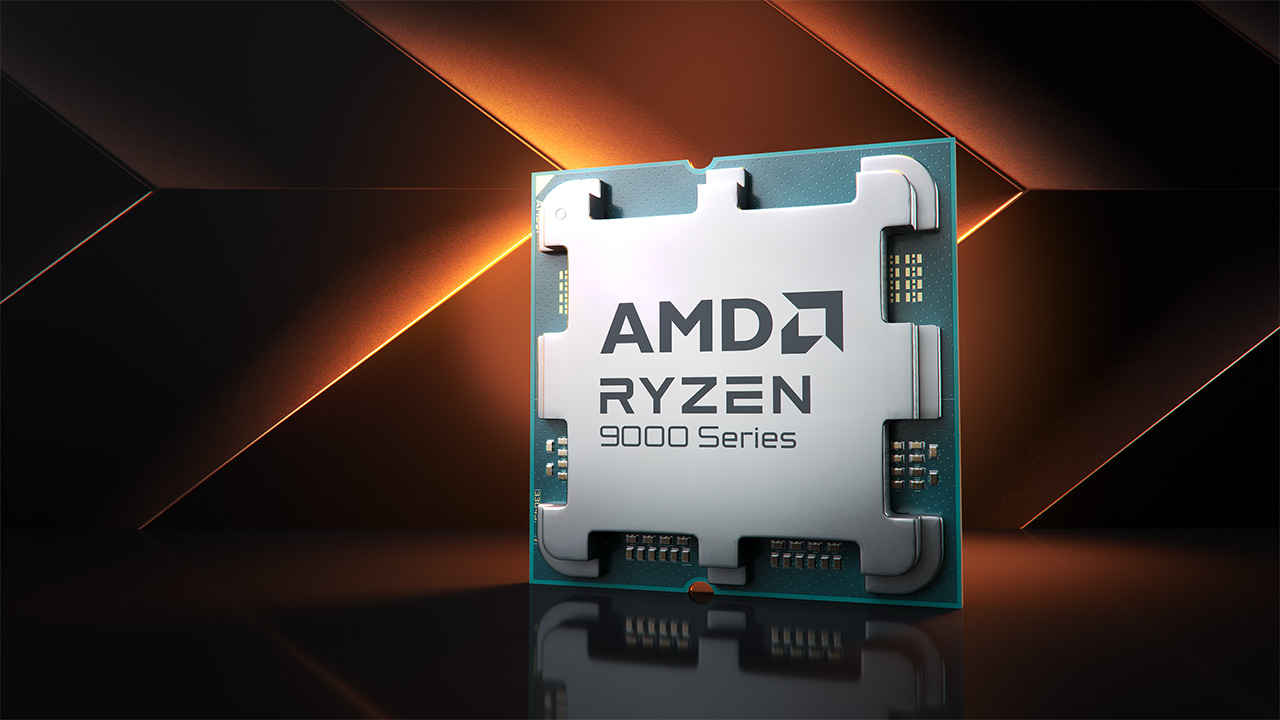
AMD has added another successful X3D processor in its kitty with the addition of the AMD Ryzen 7 9800X3D. It’s a great performer for everyday productivity, content creation and when it comes to gaming, it knocks it out of the park yet again. The only place where the 9800X3D takes a hit is in the value for money aspect because the price is a little too much to justify the added gains with gaming performance. We’d have preferred it to be a tad above the Ryzen 7 9700X and not this far apart. In India, the USD 120 difference works out to more than INR 12,000 which can be quite discouraging for gamers.
AMD Ryzen 7 9800X3D is a much more exciting launch than the initial Ryzen 9000 series “Granite Ridge” desktop processors for a very simple reason – 3D V-Cache. Not only do the X3D chips bring all the goodness of the new core microarchitecture but the additional cache memory slapped on (or should we say, Slapped under) the chip. Workloads benefitting from the added cache tend to perform really well with the X3D chips and one of the major workloads that gets a massive boost are video games. Moreover, there’s the added power-efficiency of having switched to a more efficient TSMC 4nm process node. So how well does the new AMD Ryzen 7 9800X3D fare in benchmarks? Let’s find out.
3D V-Cache, now down-under
No, AMD is not making its chips in Australia. The 3D V-Cache is now placed underneath the CPU dies. With the first implementation of TSMC’s CoWoS technology, the additional cache layer was placed on top of the CPU dies. While cache memory does run hot, it’s nothing as compared to heat generated by the CPU cores themselves. So flipping the little silicon pancakes makes a lot of sense. Why AMD chose to go with the cache on top or why TSMC might have advised them to do so or why … it doesn’t matter. They flipped the pancake, and it’s supposedly running much better. The hotter cores are now close to the heatsink, and therefore, the CPU cooler as well. AMD states that the move has resulted in a massive benefit when looking at the thermal. Also, the 3D V-Cache has up to 46 per cent better thermal resistance. And since the cores are running a little cooler, they can be pushed to run at higher clock speeds. AMD has managed to run the AMD Ryzen 7 9800X3D at a 500 MHz higher base clock and 200 MHz higher boost clock compared to the Ryzen 7 7800X3D. They also state that multi-core residency has improved a lot and the multi-threaded performance is much closer to the AMD Ryzen 7 9700X which runs at 105W. This is purely because the 9800X3D can better use the power that’s provisioned for it.
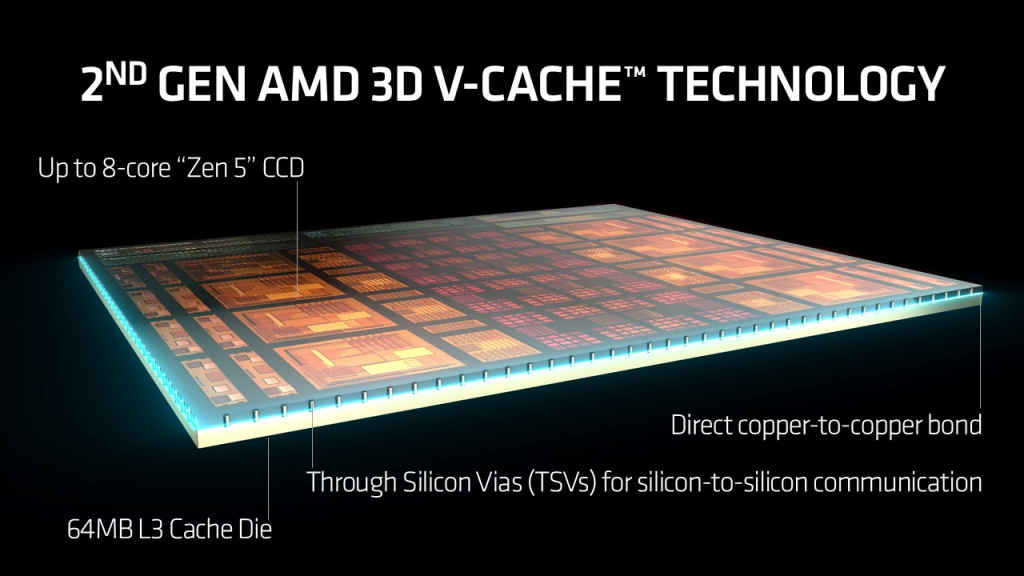
AMD Ryzen 7 9800X3D Specifications
The AMD Ryzen 7 9800X3D has some specs similar to the Ryzen 7 9700X with the same 8 Cores and 16 Threads, L1 and L2 Caches. The base clock speed goes up by 900 MHz and the boost clock drops by 300 MHz. 3D V-Cache adds 64 MB of L3 Cache on top of the existing 32 MB to give 96 MB of L3 Cache. That’s the same amount as the 7800X3D. The TDP has gone up because there are more components running in the same space and there’s also the higher base clock speed leading to more heat on average.
The DRAM speeds are still at 5600 MT/s so not much has changed on the memory front. Intel’s recent Core Ultra 200S processors raised the non-OC memory speeds to 6400 MT/s and also added support for CUDIMMs / CSODIMMs. We feel that this seems to have been an easy addition with 6400 MT/s being the memory sweet spot for AMD Zen 5 chips. Aside from these things, the AMD Ryzen 7 9800X3D has nothing different from the recently launched Ryzen 9000 chips.
On the platform front, we’ve got the X870E motherboards for enthusiasts available right now. The X870, B850, B840 chipset based motherboards will be launched later on.
AMD Ryzen 7 9800X3D Test Rig
We received a full kit with new 9800X3D processor, SSD, and memory sticks. We didn’t use the provided SSD and stuck to our own storage drives. Here’s the full specs:
- CPU: AMD Ryzen 7 9800X3D
- Motherboard: X870E AORUS MASTER
- RAM: 2x G.Skill Trident Z5 16 GB
- SSD: Kingston Renegade PCIe Gen 4.0 SSD
- Cooler: ASUS ROG RYUJIN III 360 ARGB
- PSU: Cooler Master MWE Gold 850 V2
AMD Ryzen 7 9800X3D Performance
Cinebench 2024
Cinebench 2024 is based on Maxon’s Cinema 4D software, designed to evaluate a processor’s performance in rendering complex 3D scenes. It tests both single-core and multi-core capabilities, highlighting how efficiently a CPU handles multi-threaded tasks common in professional rendering workflows. The benchmark utilizes modern instruction sets and large datasets, providing an up-to-date assessment of CPU performance in contemporary applications.
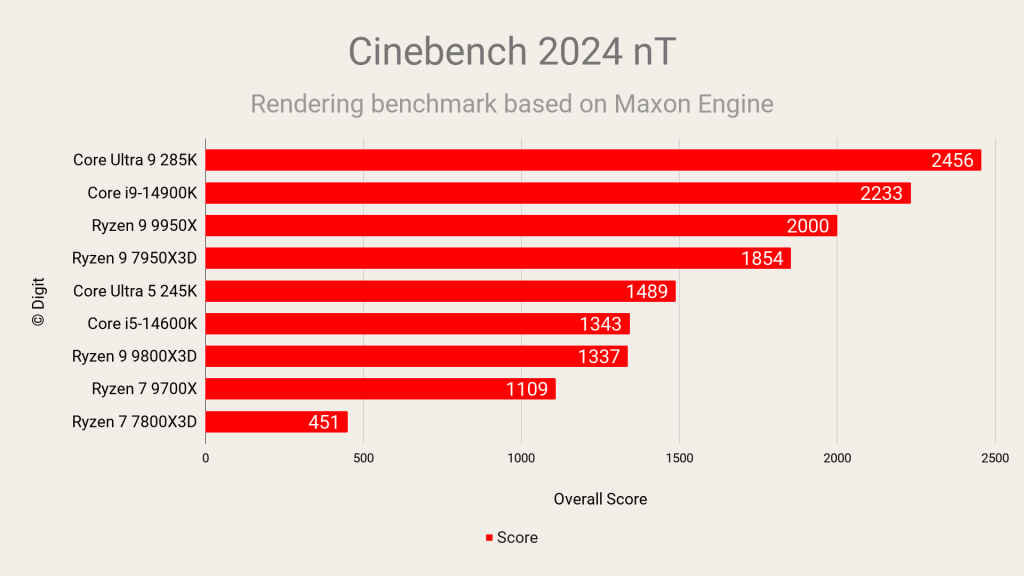
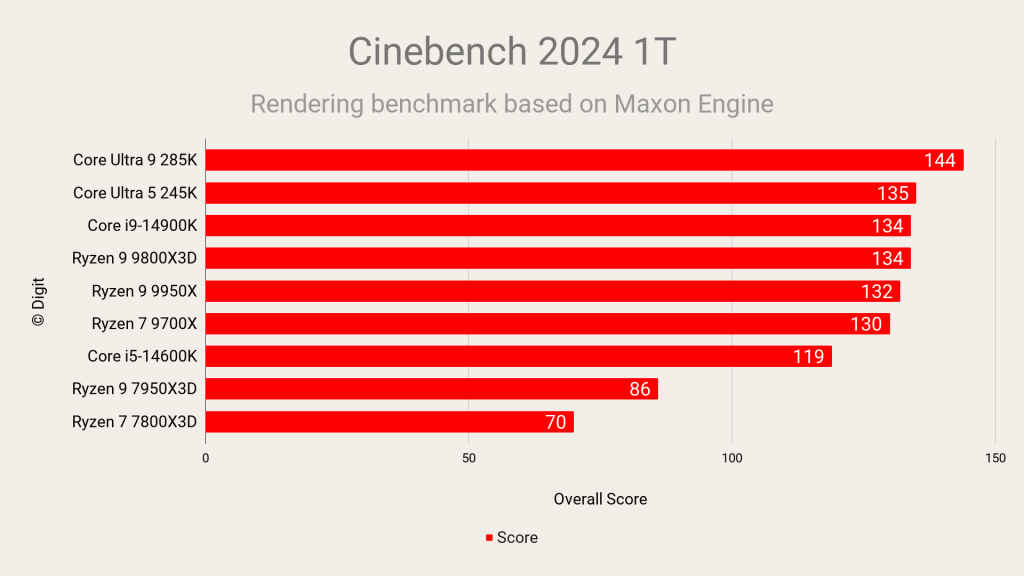
Cinebench R23
Cinebench R23 is the older version based on the same Cinema 4D engine and it too measures a processor’s ability to render photorealistic 3D scenes. Though replaced by Cinebench 2024, we retain it to compare against processors launched a few years prior. It also focuses on both single-threaded and multi-threaded performance, simulating real-world tasks relevant to content creators and professionals in 3D rendering.
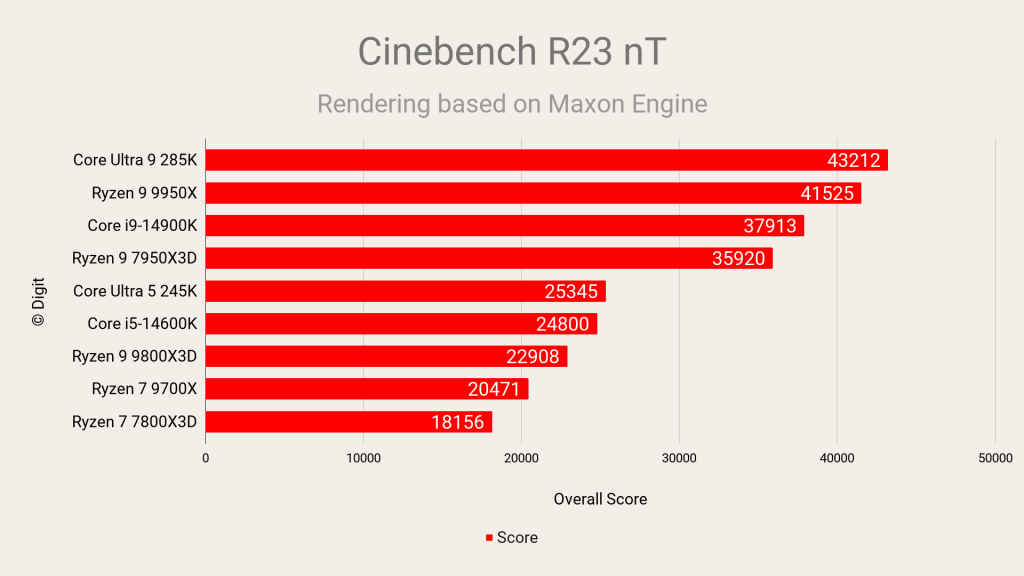
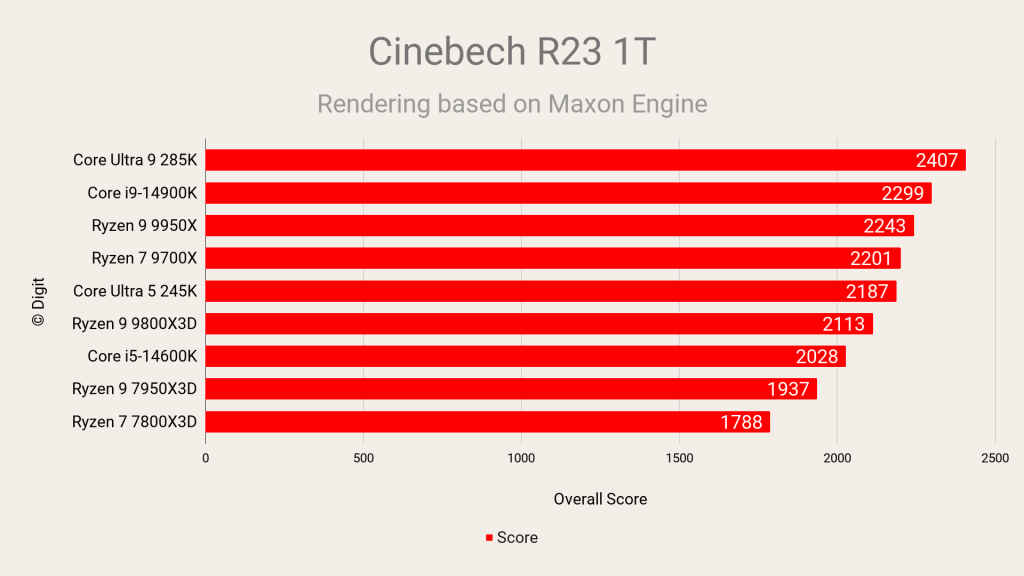
Blender
The Blender Benchmark assesses a processor’s performance by rendering scenes using Blender, a popular open-source 3D creation suite. It evaluates both CPU and GPU capabilities in handling complex rendering tasks. This benchmark provides insights into how well a processor performs in real-world 3D modeling, animation, and rendering scenarios. An interesting aspect is that it highlights the efficiency of different CPU architectures in multi-threaded workloads, as Blender can effectively utilize multiple cores. It’s particularly useful for professionals and enthusiasts relying on Blender, indicating how hardware upgrades might impact workflow efficiency and rendering times.
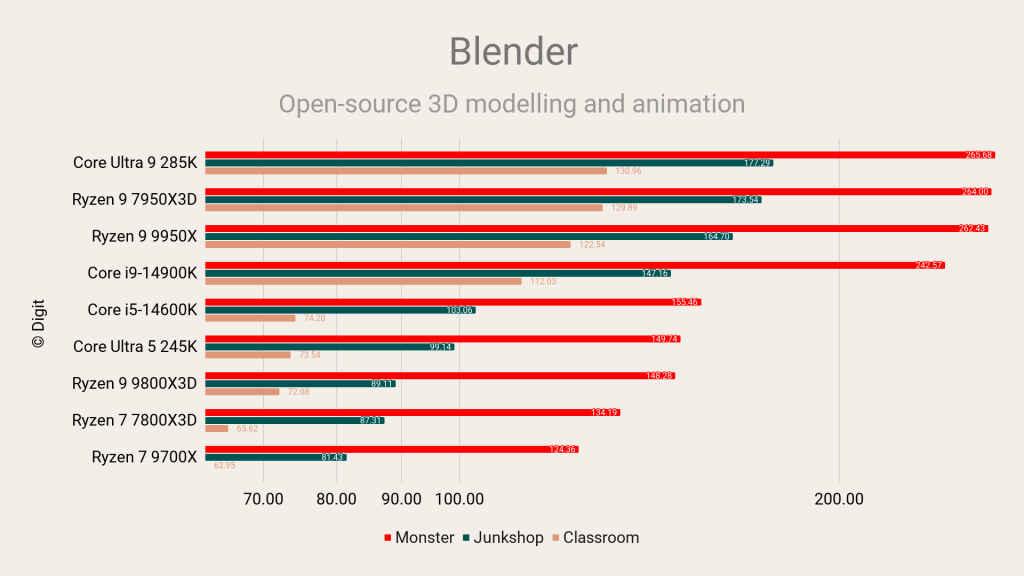
V-Ray
V-Ray is another benchmark that measures a processor’s performance in rendering but it uses the V-Ray engine, widely used in visual effects, architecture, and design industries. It tests both CPU and GPU rendering capabilities, focusing on multi-threaded performance and handling complex calculations involved in ray tracing. CPUs with higher core counts and multi-threading technology tend to excel here as V-Ray efficiently utilises available threads.
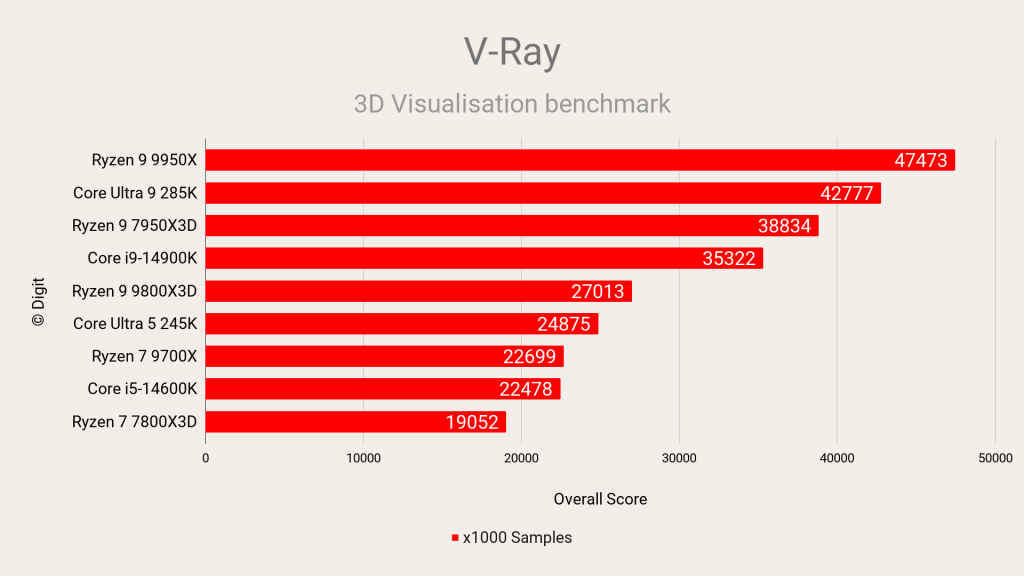
WinRAR
WinRAR Benchmark evaluates a processor’s performance in data compression and decompression tasks, common in file archiving and management. It tests single-threaded performance, memory bandwidth, and latency, as these factors influence compression speed. While WinRAR isn’t fully optimized for multi-core CPUs, processors with higher Instructions Per Cycle (IPC) and clock speeds perform better. For more modern algorithms, we use 7-Zip.
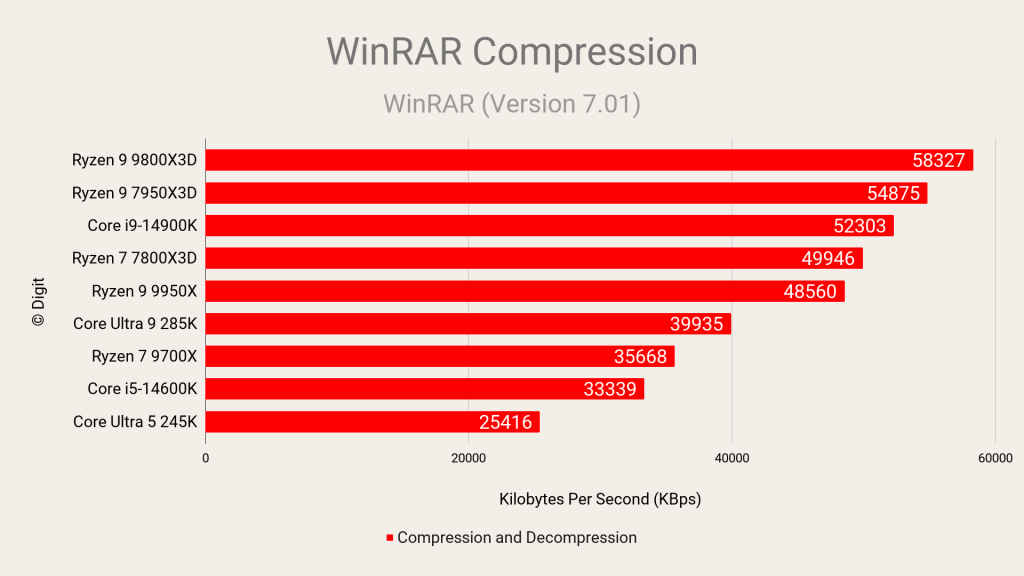
AIDA64
AIDA64 Memory Benchmark measures the memory bandwidth and latency of a system, highlighting how quickly data transfers between the CPU and RAM. It tests read, write, and copy speeds, providing insights into the efficiency of the memory subsystem, including RAM speed, timings, and memory controller performance. AIDA64 also has benchmarks to evaluate how well a processor can handle AES, ZLib and SHA3 encryption and decryption tasks.
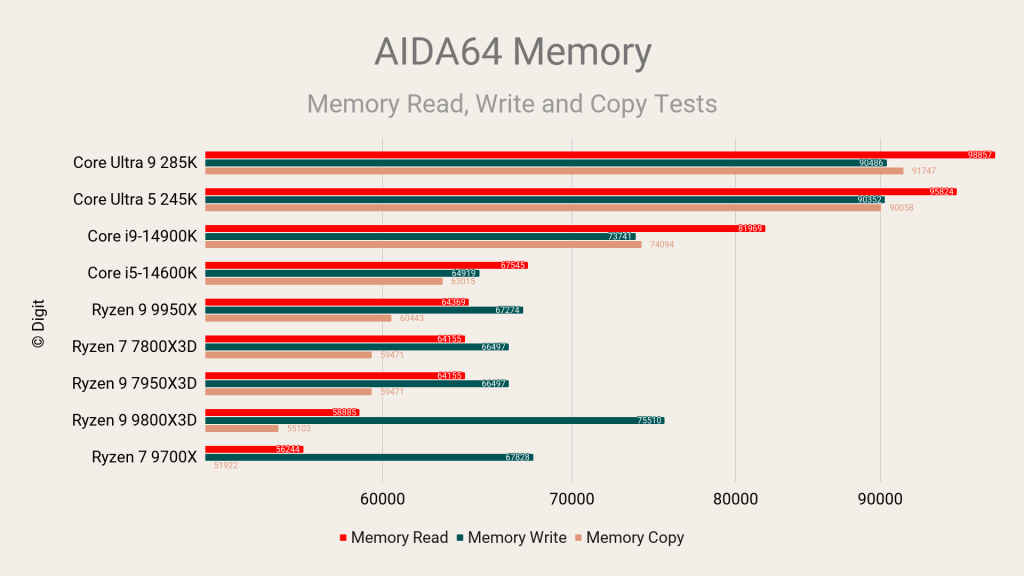
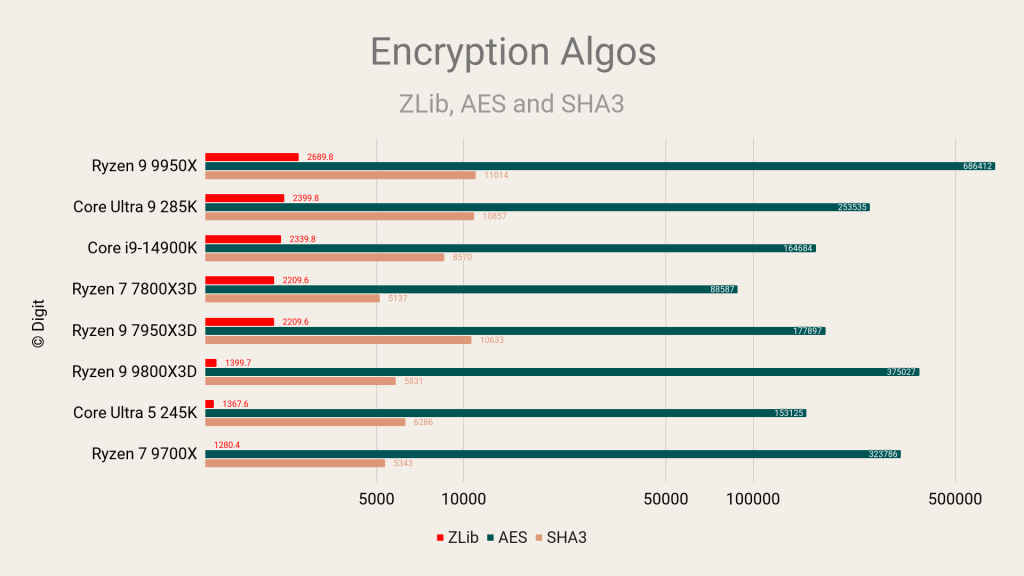
y-cruncher
The y-cruncher benchmark computes mathematical constants like Pi to a high number of digits—in this case, 2.5 billion—testing a processor’s multi-threaded performance and memory subsystem under heavy computational load. It stresses the CPU’s integer and floating-point units, cache hierarchy, and memory bandwidth. It’s particularly useful for evaluating system stability under sustained heavy workloads, making it valuable for users who are overclocking their systems.
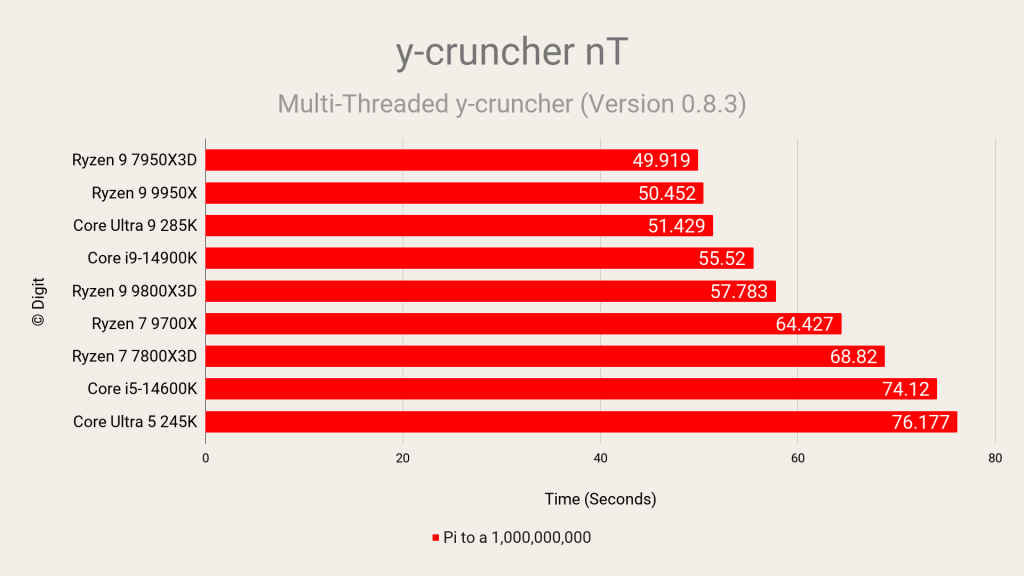
Procyon Office
The Procyon Office Benchmark measures a processor’s performance in real-world office applications like the Microsoft Office suite, testing tasks such as document editing, spreadsheet calculations, and presentation creation. It focuses on both single-threaded and multi-threaded performance, providing insights into how a CPU handles everyday productivity tasks.
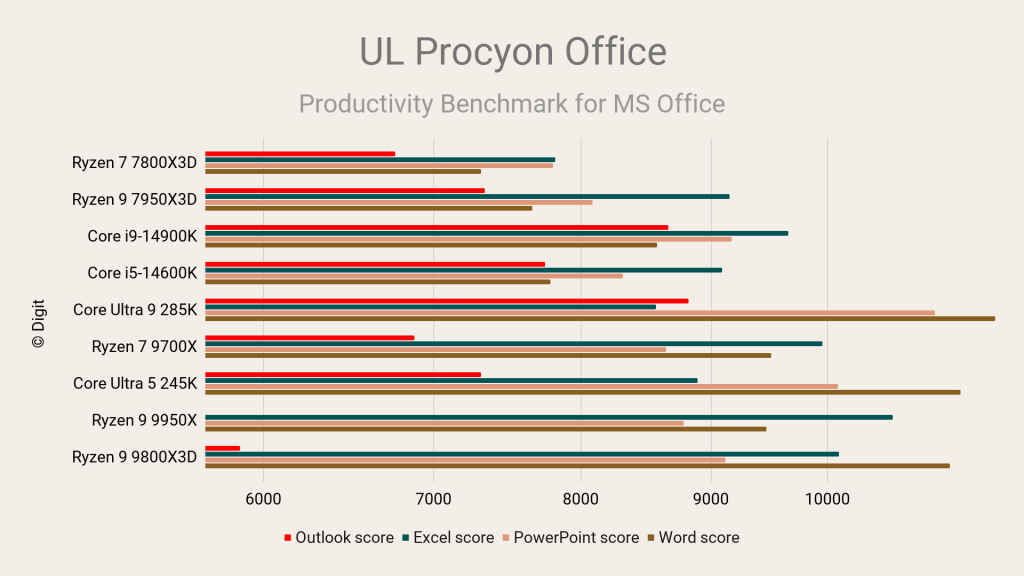
Mozilla Kraken & Google Octane
Mozilla Kraken and Google Octane are JavaScript benchmarks evaluating a processor’s performance in executing complex web-based scripts, reflecting real-world web application usage. It tests single-threaded performance and the efficiency of a CPU’s instruction pipelines in handling dynamic scripting languages.
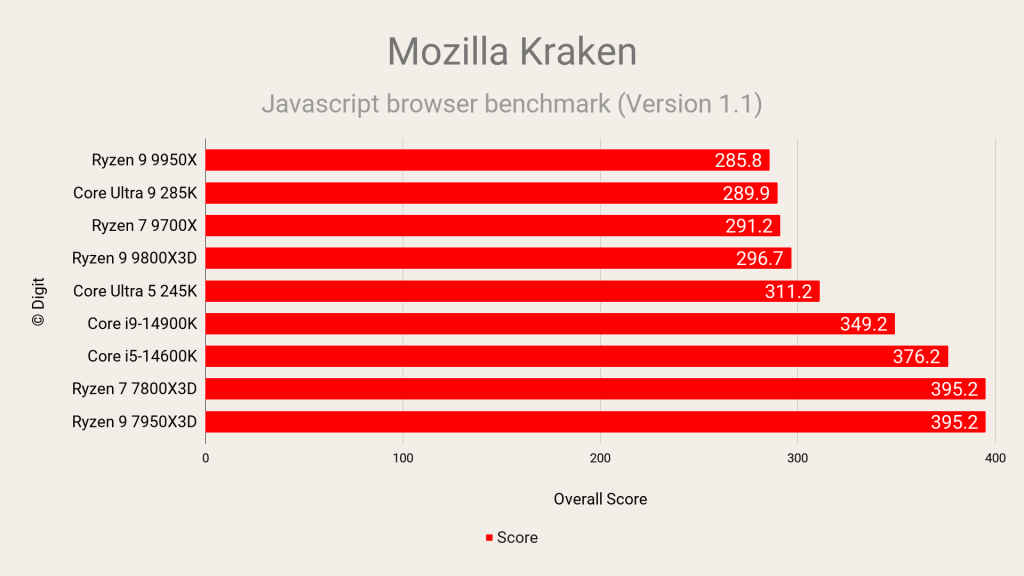
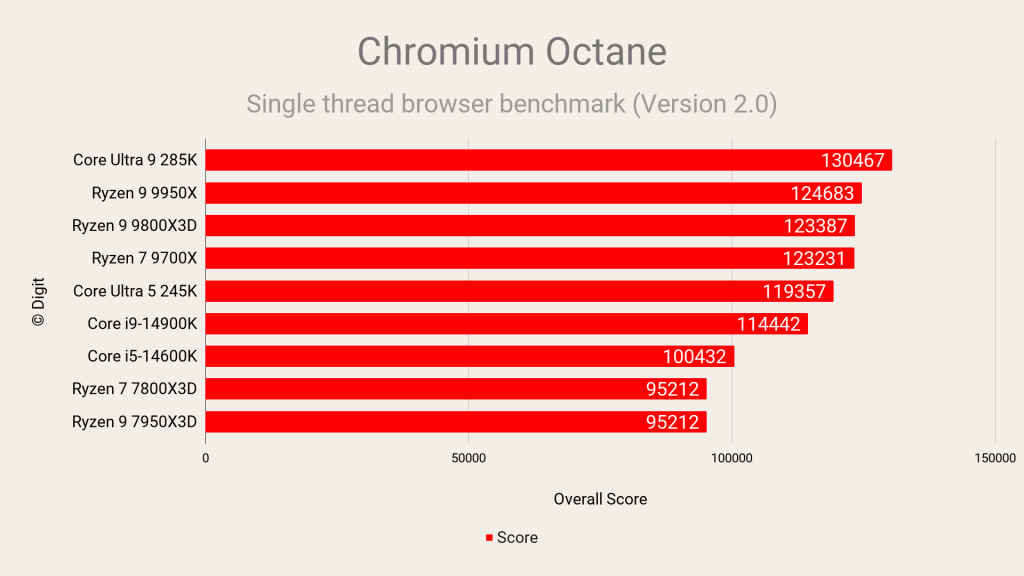
Procyon AI Computer Vision
The UL Procyon AI Computer Vision benchmark measures the performance of AI inference engines to understand how well processors can handle machine-vision tasks using popular neural networks.
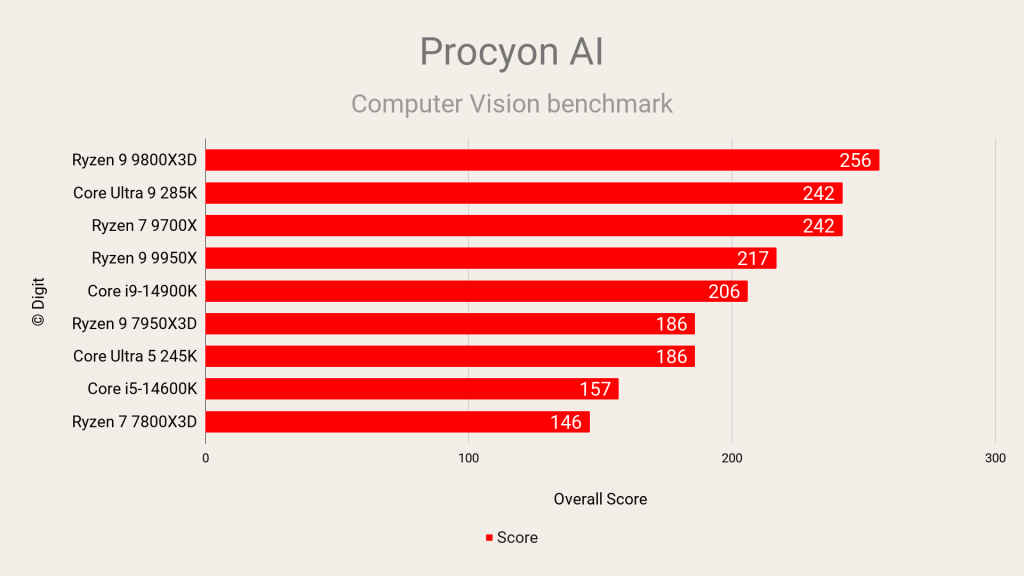
3DMark Time Spy (iGPU)
3DMark Time Spy is a DirectX 12 benchmark evaluating graphics performance. We use it primarily to test the relative performance of the iGPU to discrete GPUs and where iGPUs stand amongst their peers. With both companies improving their integrated graphics stack, it allows us to measure how well the iGPU performs and if it can handle popular eSports titles.
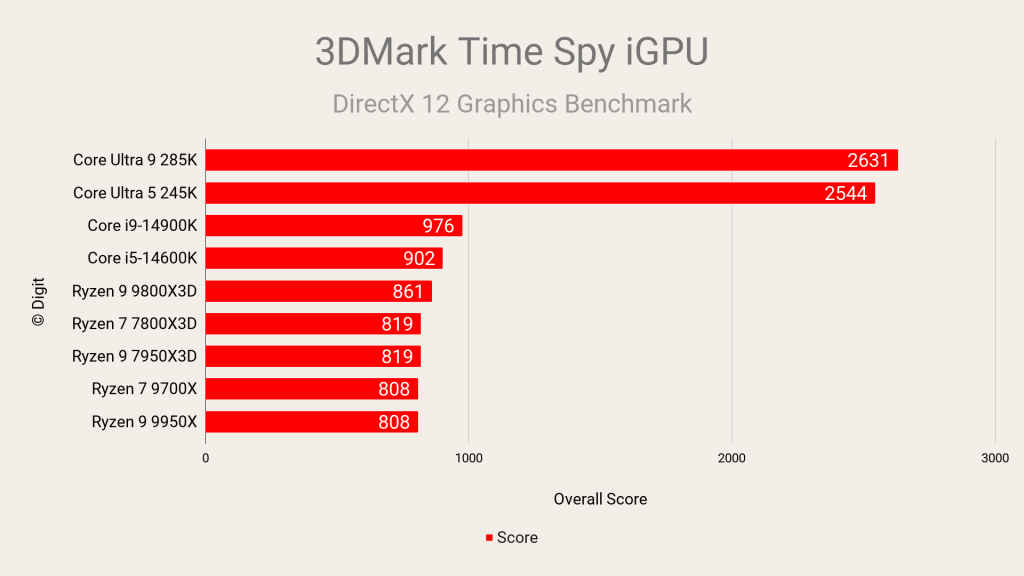
7 Game Average
While 3DMark is an excellent synthetic benchmark, it’s not really indicative of real-world gaming performance and that’s why we have to rely on popular AAA video games to assess how well the processor deals with contemporary video game engines. We revise the video games once every two years based on what’s most popular as per Steam and we also maintain a mix between different game engines.
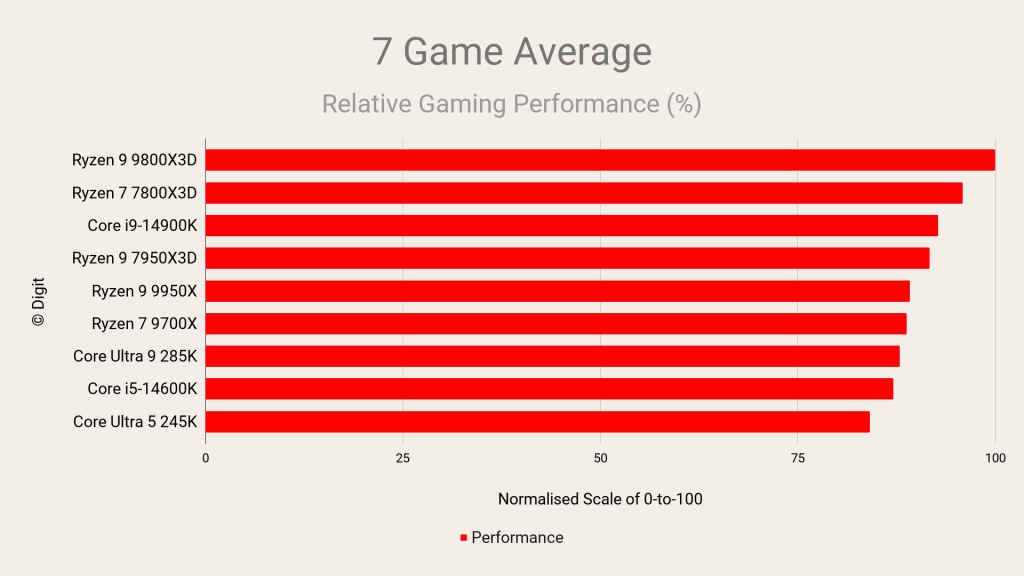
Core to Core Latency – AMD Ryzen 7 9800X3D
Core-to-Core Latency measures the time it takes for data to transfer between different cores within a CPU. It highlights the efficiency of the processor’s inter-core communication pathways and cache coherency mechanisms. An interesting insight is that lower core-to-core latency can improve performance in multi-threaded applications where threads need to synchronize or share data frequently. It can reveal architectural differences between CPUs, such as the impact of chiplet designs versus monolithic die layouts, affecting inter-core communication efficiency.
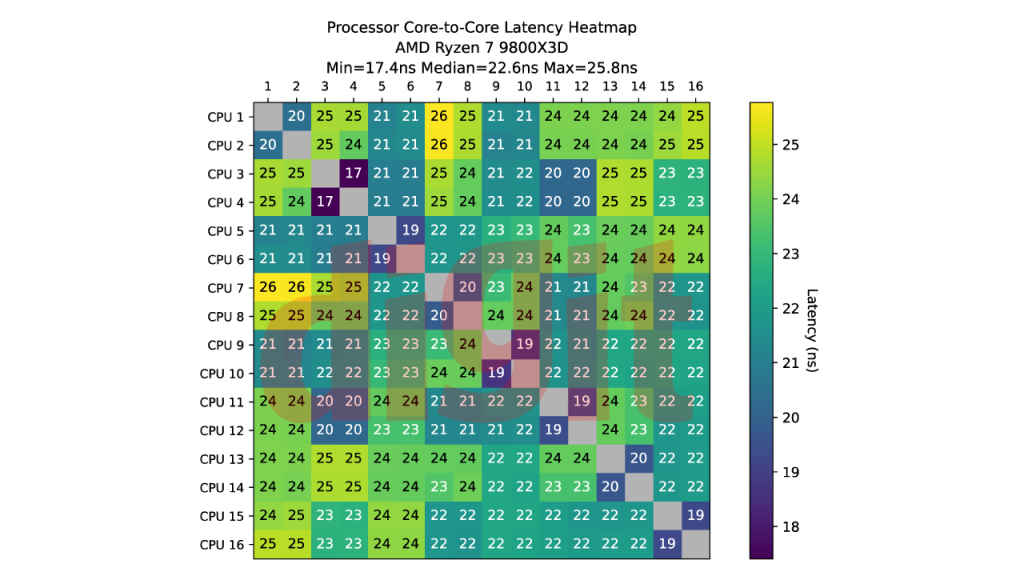
The AMD Ryzen 7 9800X3D only has 8 Cores so it’s easier to keep the median core-to-core latency low and that’s definitely beneficial for a lot of computing tasks. Also, it seems like there’s only one CCD so there’s no added penalty of switching to another CCD. Again, this is also beneficial for quite a lot of workloads.
Power and Thermals
The AMD Ryzen 7 9800X3D peaked at 150 Watts over a 10-minute throttling run. And the average wattage was a little lesser than that. Compared to the 9700X, this is a bit higher but at no time did we ever see any throttling. Even when we swapped out the cooler for a single-fan air cooler, the CPU ran just fine. Average temperatures were at 93 degrees Celsius and peak was at 95 degrees.
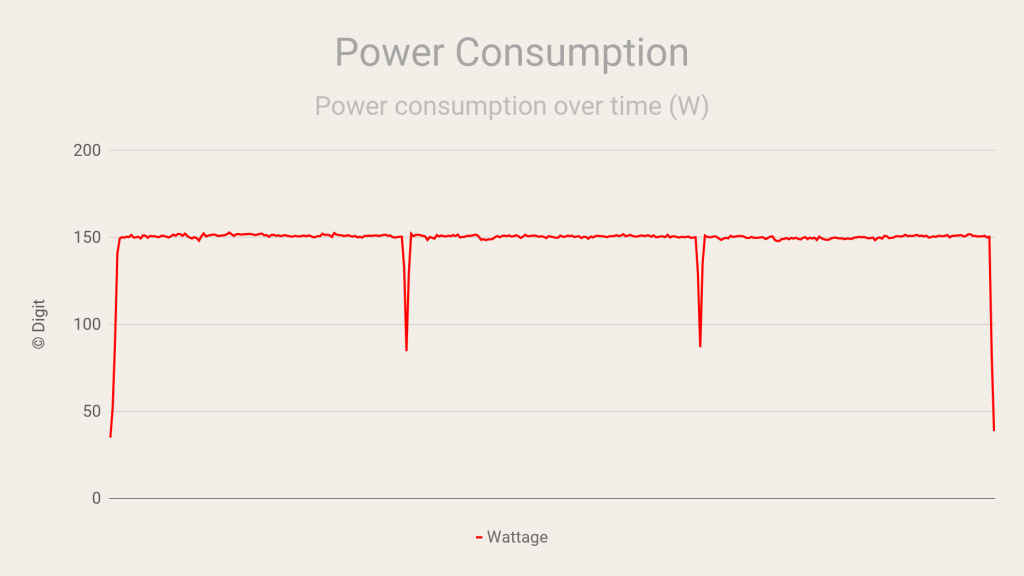
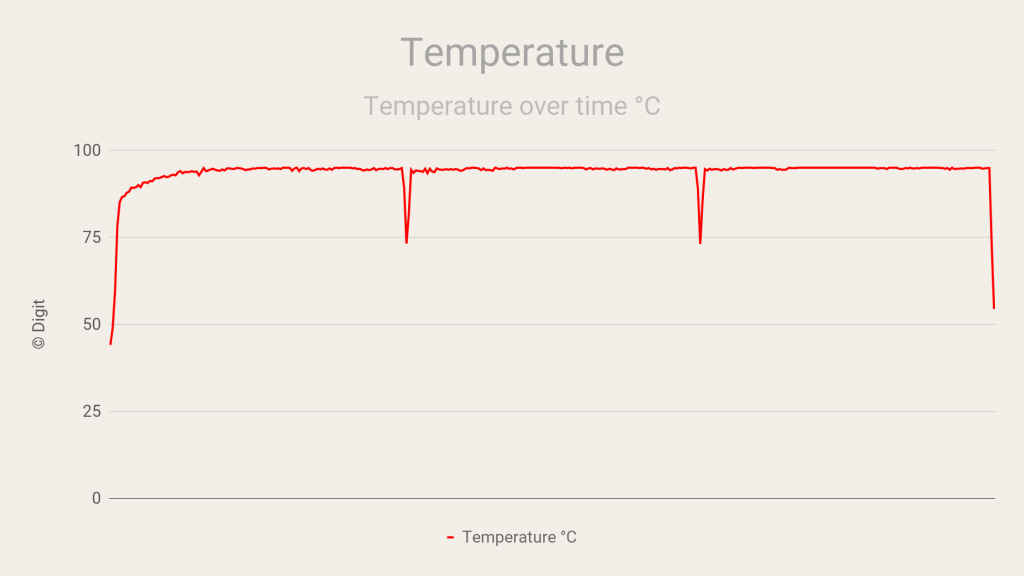
Verdict
AMD has added another successful X3D processor in its kitty with the addition of the AMD Ryzen 7 9800X3D. It’s a great performer for everyday productivity, content creation and when it comes to gaming, it knocks it out of the park yet again. The only place where the 9800X3D takes a hit is in the value for money aspect because the price is a little too much to justify the added gains with gaming performance. We’d have preferred it to be a tad above the Ryzen 7 9700X and not this far apart. In India, the USD 120 difference works out to more than INR 12,000 which can be quite discouraging for gamers.
Mithun Mohandas
Mithun Mohandas is an Indian technology journalist with 14 years of experience covering consumer technology. He is currently employed at Digit in the capacity of a Managing Editor. Mithun has a background in Computer Engineering and was an active member of the IEEE during his college days. He has a penchant for digging deep into unravelling what makes a device tick. If there's a transistor in it, Mithun's probably going to rip it apart till he finds it. At Digit, he covers processors, graphics cards, storage media, displays and networking devices aside from anything developer related. As an avid PC gamer, he prefers RTS and FPS titles, and can be quite competitive in a race to the finish line. He only gets consoles for the exclusives. He can be seen playing Valorant, World of Tanks, HITMAN and the occasional Age of Empires or being the voice behind hundreds of Digit videos. View Full Profile
